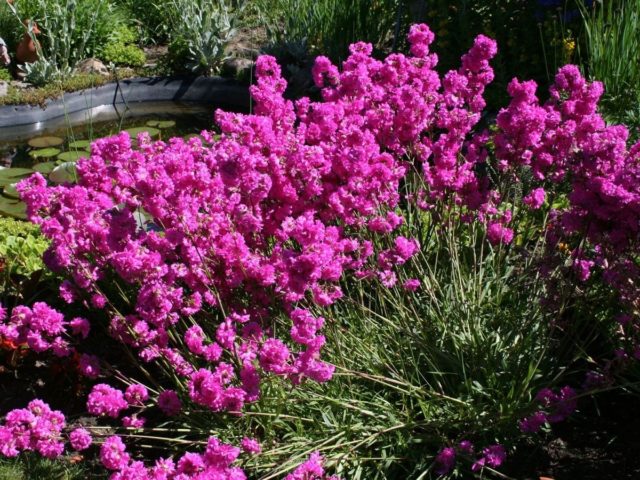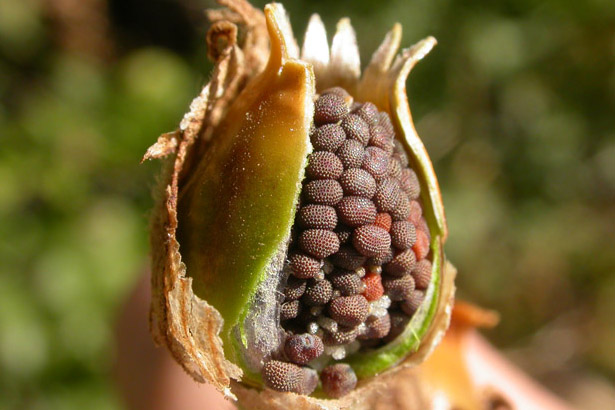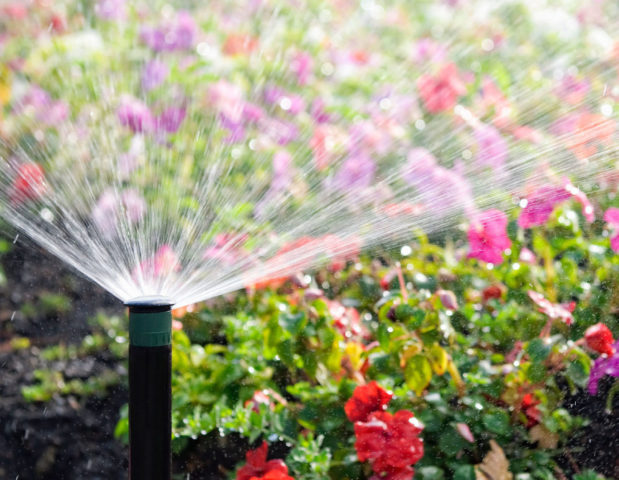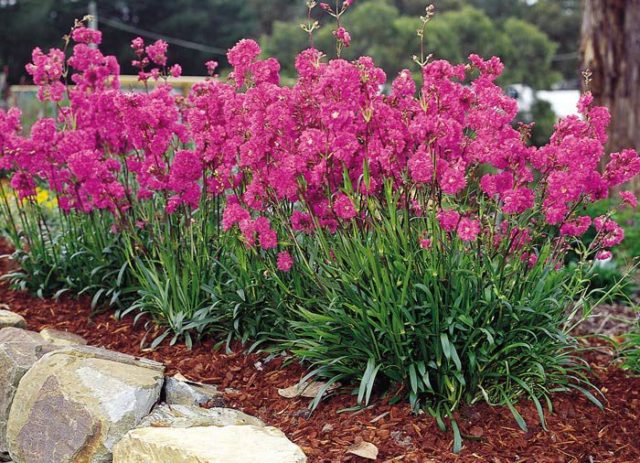Content
Gardeners are constantly looking for colorful and unusual plants for their flower beds. When originality and decorativeness are combined with ease of care, this is even better. The unpretentious and outwardly attractive Lichnis Rosetta is a very suitable option for those who cannot devote much time and energy to the garden, but want to have a beautiful flower garden.
Description of the variety and characteristics
Lychnis, popularly known as "dawn", is a perennial plant from the Clove family. In nature, it is widespread in the Far East, Siberia, and northern China. On the basis of different species of this plant, breeders have created many "cultivated" varieties, including sparkling lychnis Rosetta. They successfully take root throughout Russia in a temperate climate.
The flower attracted the attention of specialists with its decorativeness and unpretentiousness. Work in the USSR was actively carried out in the 70s of the twentieth century. By the method of experimental polyploidy, its new tetraploid varieties were created, which differ from the "natural" ones by the larger sizes of the inflorescences and the brightness of their color. One of the most successful achievements of specialists is the sparkling Rosetta lichnis.
Unlike the intensively branching wild-growing specimens, the "cultivated" Lychnis Rosetta has one, but very thick and powerful stem. It does not need a garter or other support, it does not break even with strong gusts of wind and heavy showers. The stem branches only in the upper part.
Lyhnis Rosetta is a perennial rhizome shrub. The average height is 60-65 cm, in favorable conditions the plant stretches up to 1 m. Stems and leaves of a noble dark green color. The leaf plates are large, leathery, rough to the touch, with a "fleecy" edge. The stems are also rough. The shape of the leaves is cordate-elongated, with a pointed tip. They are collected in a root socket. The number in each is 15-19 pieces.
The flowering is very bright, pleases the gardener for about one and a half months. It begins in the second decade of July and ends at the end of summer.
Inflorescences reach 12-15 cm in diameter, individual flowers - 2-3.5 cm. The shape of the flowers is tubular, the inflorescences are a cross between spherical and pineal-capitate. They are quite loose, each with at least 3 flowers. The petals are twisted, rather wide, four-part, very bright in color (a cross between lilac, crimson-pink and crimson). Artists call this shade scarlet.

Blooming Lychnis Rosetta is like a bright "cloud" on a flower bed
After flowering, the plant bears fruit. According to the botanical classification, it is a multi-nut. It contains large bud-like seeds (up to 2 cm in diameter). They are suitable for reproduction, you can get new copies of the flower yourself.
Breeding methods for Lyhnis sparkling Rosetta
Lychnis sparkling Rosetta can be propagated both vegetatively and generatively. The resulting plants retain the varietal characteristics of the "parent".
Growing Lychnis Rosetta from seeds
When collecting seeds, it is important not to miss the moment, otherwise the "box" with them will burst, they will scatter. To prevent this from happening, the fruit, when it starts to crack, needs to be wrapped with a napkin, fixing it on the shoot.
Seeds remain viable for 3-4 years. Before planting, the self-collected planting material, in addition to testing for germination and disinfection for the prevention of fungal diseases, needs stratification. The seeds are mixed with wet peat or sand and the container with them is sent to the refrigerator for 12-15 days.

To preserve germination for a long time, Rosetta Lychnis seeds should be stored in a paper or linen bag, in a cool, dark room.
You can grow flower and seedlings. But gardeners use this method of reproduction relatively rarely. This means additional expenditure of time and effort, and good germination is already characteristic of seeds.
Cuttings
The best time for cuttings is the first half of June. From healthy plants at the age of 2-3 years, the tops of shoots 20-25 cm long are cut off. The lower oblique cut is kept for 2-3 hours in a solution of any root formation stimulator and planted in a greenhouse or on a garden bed, installing a canopy of white covering material on top. The established plants are transferred to the flowerbed in early autumn. Cuttings take root in almost 100% of cases.
Planting and caring for Lyhnis Rosetta
Caring for Rosetta Lyhnis is extremely simple. The plant does not need any specific agricultural techniques. It adapts to a wide range of climatic and weather conditions.
When and how to plant Lychnis Rosetta seeds
Seeds are planted both in spring (April-May) and before winter (October-November). Lychnis will bloom this summer or next year, but there will be few buds in both cases.
When planting in open ground, the seeding depth of Rosetta Lychnis depends on the season. In the spring, there are enough holes of 2-3 cm, in the fall - 6-8 cm. In the second case, in order for the seeds to survive the winter, they are sprinkled with a mixture of humus with peat or sand, over the flowerbed they are tightened with a covering material. The interval between the future Rosetta lyhnis bushes is 30-35 cm, the row spacing is 40-50 cm.
Lichnis Rosetta is unpretentious to lighting - it adapts to both direct sunlight and partial shade. This does not affect the abundance and brightness of flowering.
How to care
Features of care for Lyhnis Rosetta:
- Watering. Usually once a week is enough. In the heat, they give water twice as often. The rate for an adult plant is 7-10 liters. It is best to water it in the morning; lichnis most actively absorbs water during the day.
- Loosening. It is carried out 1-2 times a month a couple of hours after watering. The depth of soil cultivation in a flowerbed with Rosetta lyhnis is 4-5 cm.
- Top dressing. Lychnis Rosetta does not tolerate an abundance of organic matter. For this reason, it is preferable to plant it in a light, "poor" substrate. During the season (from mid-April to the end of August), about once a month, it is fed with any fertilizer for flowering garden plants with a minimum of nitrogen in the composition.
- Wintering. Frost resistance of Rosetta Lychnis - up to -30-35 ºС. Therefore, no special preparation for the cold weather is required for the plant. It is only necessary to cut off the dried shoots, leaving "hemp" 3-5 cm high.

Irrigation for Lichnis Rosetta is the most important agricultural activity
Pests and diseases
Insects are not too interested in a flower. But occasionally it can be attacked by such "universal" garden pests as aphids and leafworms.It is worth checking the plant regularly to spot insects as soon as they appear.
An effective preventive measure is spraying the plant and soil in the flower bed with any sharp-smelling infusions every 10-12 days. For these purposes, needles, citrus peels, tops of tomatoes and potatoes, arrows of onions and garlic, wormwood, tansy are used. If insects attack Rosetta Lychnis en masse, they are treated with any wide-spectrum insecticides (the frequency and concentration of the solution are indicated in the instructions).
The main cause of fungal diseases (rust, powdery mildew) is excessive "crowding" in the flowerbed with rainy, cool weather conducive to their development. Removal of all affected parts of Rosetta lychnis (leaves, flowers, shoots) and fungicide treatment will help to cope with them.
Application in landscape design
Likhnis Rosetta is quite "self-sufficient" in the flowerbed. A bright spot on a green background (for example, in the middle of a lawn or in front of decorative conifers) immediately attracts attention. It looks good against the background of light walls, fences, gazebos.
If you want to create a "company" for a plant, the following are suitable for this:
- bells;
- primroses;
- asters;
- chrysanthemums;
- carnations;
- Gaillardia;
- nivyanik.

The simplest and most obvious solution is to arrange a border from Rosetta Lyhnis
The plant is suitable for decorating mixborders, rockeries, alpine slides. If you look at the photo of Lyhnis Rosetta in the flower beds, it is easy to understand that it combines very effectively with any white, cream and bright yellow flowers. For the winter, the plant can even be transplanted into a suitable sized pot and taken home with you.
Conclusion
Likhnis Rosetta is able to grow even a novice gardener. The plant is very undemanding in terms of care, easily multiplies, rarely suffers from diseases and pests. Lichnis Rosetta in the flowerbed is harmoniously combined with many plants, but looks good "alone".








